Welcome to Brand Breakdown, a series of comprehensive yet easy-to-digest guides to your favorite companies, with insights and information you won’t find on the average About page.
Sonos basically invented the multi-room category of home audio, starting as a software company in the early 2000s before integrating its Wi-Fi-enabled network into hardware a few years later. Its first amplifier (which became the Connect:Amp) and subsequent speakers were great, but the real beauty of Sonos is its ecosystem of audio products that make listening to music at home really easy.
The magic of Sonos is the ability to group any number of Sonos speakers together, provided they are all connected to the same Wi-Fi network, and have them all playing in sync throughout the house. Alternatively, they can all be playing different tunes if you’d like. And it’s all controlled through a smartphone app.
Imitation is the finest form of flattery, so, over the years, a lot of companies have tried to beat Sonos at its own game. New wireless protocols have been introduced, such as DTS Play-Fi, Google’s Chromecast, Bluesound and Apple AirPlay, which emulate what Sonos does. Some big companies, most notably Google and Bose, also have their own line of multi-room speakers.
Under that pressure, Sonos has introduced smaller and more affordable speakers, like the Play:1, giving more people a gateway into Sonos. Under new leadership — after a decade in charge, CEO John MacFarlane stepped down in 2017 and handed over the reins to Patrick Spence — the company is now in the business of producing smart speakers that work with Amazon’s Alexa and Google Assistant.
In 2022, Sonos’s bread-and-butter is still multi-room audio, but the breadth of its entire ecosystem has expanded a lot. Its line of soundbars (as well as its connected amplifiers) have helped it weave its way into the home theater so that now you can integrate your TV into its greater audio system. Its connected receivers and amplifiers have helped Sonos become a solution for people who already have some part of the system, like a vintage receiver or passive speakers — which is most people — and don’t want to start over. And now Sonos even has several portable speakers.
The bottom line: Sonos is still the best wireless home audio ecosystem out there and Sonos are worth it in every sense.
Products in the Guide
-
Sonos One
Read more -
Sonos One SL
Read more -
Sonos Five
Read more -
Symfonisk Bookshelf Speaker (Gen 2)
Read more -
Sonos Roam
Read more -
Sonos Roam SL (Discontinued)
Read more -
Sonos Move
Read more -
Sonos Ray
Read more -
Sonos Beam, Gen 2
Save $100
Read more -
Sonos Arc
Read more -
Sonos Port
Read more -
Sonos Sub, 3rd Gen
Read more -
Sub Mini
Read more -
Symfonisk Table Lamp (Gen 2)
Read more -
Symfonisk Table Lamp, Gen 2
Read more -
Symfonisk Picture Frame Speaker
Read more -
Sonos Amp
Read more -
Sonos Boost
Read more -
Sonos Architectural by Sonance
Read more -
Sonos Beam, Gen 1 (Discontinued)
Read more -
Sonos Play:1 (Discontinued)
Read more -
Sonos Playbar (Discontinued)
Read more -
Sonos Playbase (Discontinued)
Read more -
Sonos Play:3 (Discontinued)
Read more -
Sonos Play:5, Gen 2 (Discontinued)
Read more -
Sonos Play:5, Gen 1 (Unsupported)
Read more -
Sonos Connect (Unsupported)
Read more -
Sonos Connect: Amp (Unsupported)
Read more
How to Get a Great Deal on Sonos Speakers
The Upgrade Program: As of November 2020, Sonos has introduced a new Upgrade Program that allows long-time Sonos owners to buy new Sonos speakers and get a 15-percent discount. This is not a trade-in program; you’ll still keep your old Sonos speakers. It’s an initiative by Sonos to encourage long-time listeners to expand their system with some newer products.
Shop Certified Refurbished: Sonos refurbishes many of its speakers, amps and soundbars and sells them at a discount. The catch is that it regularly changes which of its various speakers are available in its “Certified Refurbished” section, so you might not be able to get the exact model of refurbished speaker you’re looking for. For Sonos’s latest refurbished offerings, click here.
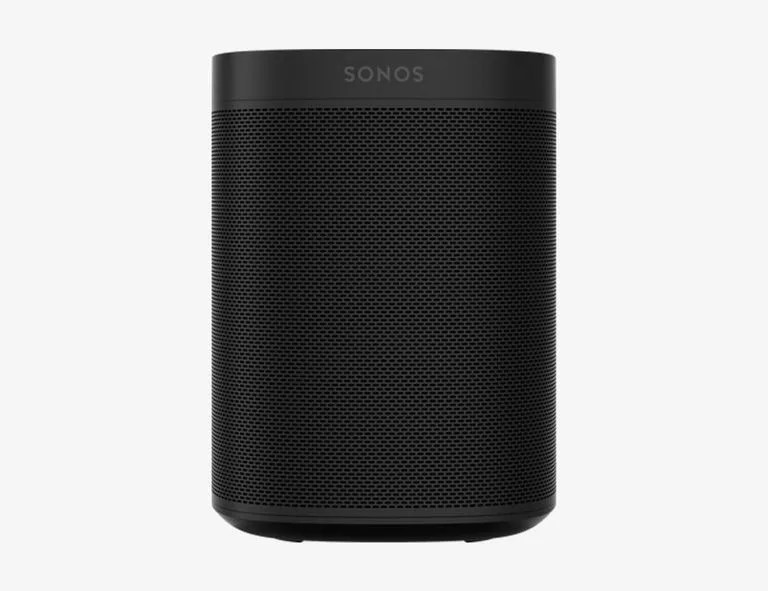 Sonos
SonosSonos One
The backbone of the Sonos lineup, One is smallest and most affordable traditional speaker Sonos offers. A smart speaker that can be integrated with either Amazon’s Alexa or Google Assistant, it has an array of microphones and comes integrated with Amazon’s Alexa voice assistant. The other big upgrade is that the One supports AirPlay 2.
Sonos updated its One speaker in early 2019; you’ll see both Sonos One “Gen 2” and Sonos One “Gen 1” speakers when shopping. The difference is the Gen 2 speakers have Bluetooth Low Energy (BLE), an updated processor and increased memory, which for most consumers won’t make a difference. Sonos just made the new models more “ready for the future,” but they sound and work the same as the predecessors. Sonos has ceased production on the “Gen 1” models, and if you’re looking for one (because they are $20 cheaper), know that they will be increasingly difficult to find.
- Drivers: one mid-woofer, one tweeter
- Amplification: two Class-D digital amplifiers
- Connectivity: Wi-Fi, Ethernet, Amazon Alexa, AirPlay 2
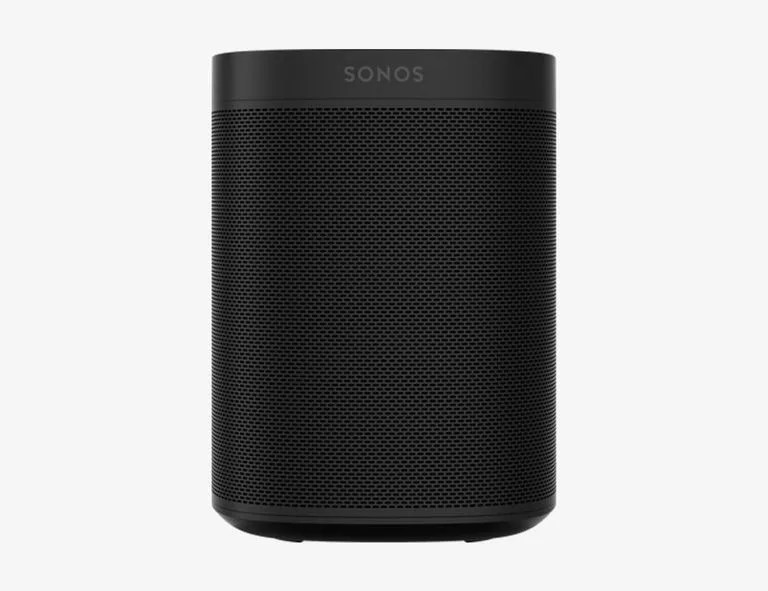 Sonos
SonosSonos One SL
The One SL is a Sonos One speaker but without the built-in mics, meaning it can’t function as a smart speaker. You can also think of it as the next-gen version of the original Play:1 speaker, which, sadly, is getting phased out. The One SL is $20 cheaper than the One speaker, and it’s available in either white or black.
- Drivers: one mid-woofer, one tweeter
- Amplification: two Class-D digital amplifiers
- Connectivity: Wi-Fi, AirPlay 2, Ethernet
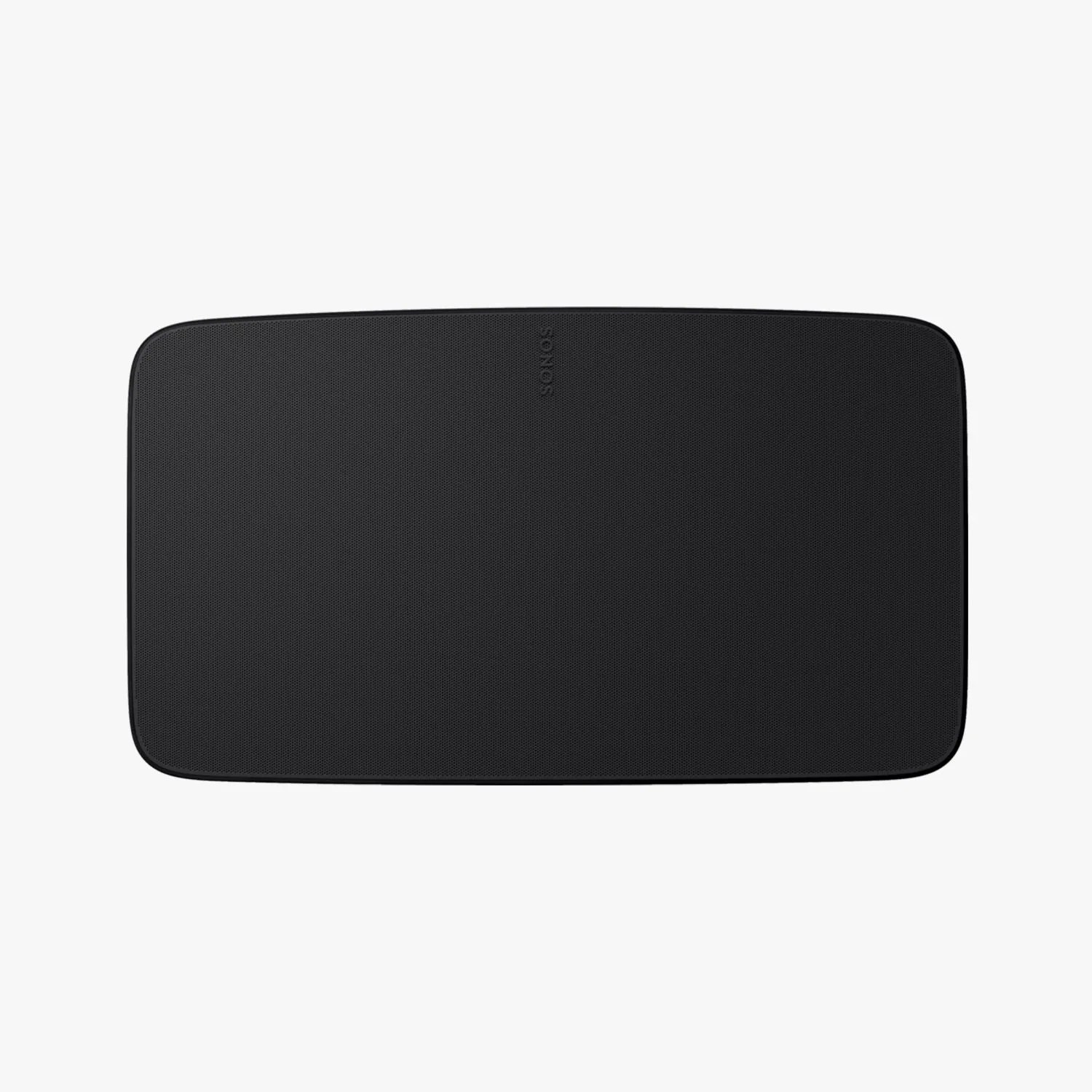 Sonos
SonosSonos Five
Released in 2020, the Five is the most up-to-date large speaker in the Sonos lineup. Like a One, but louder and better, the Five has a line-in so you can quickly connect it to an integrated turntable. And you can still pair two Fives together and place them vertically, which then designates them as right and left channels for great stereo sound. The Five comes in matte white and matte black models, but this time around the white Five has a white grille, too — so it’s all white.
The new Sonos Five speakers cost $499, which is exactly the same as the Play:5, which it replaces.
- Drivers: three mid-woofers, three tweeters
- Amplification: six Class-D digital amplifiers
- Connectivity: Wi-Fi, Ethernet, 3.5mm audio line-in, AirPlay 2
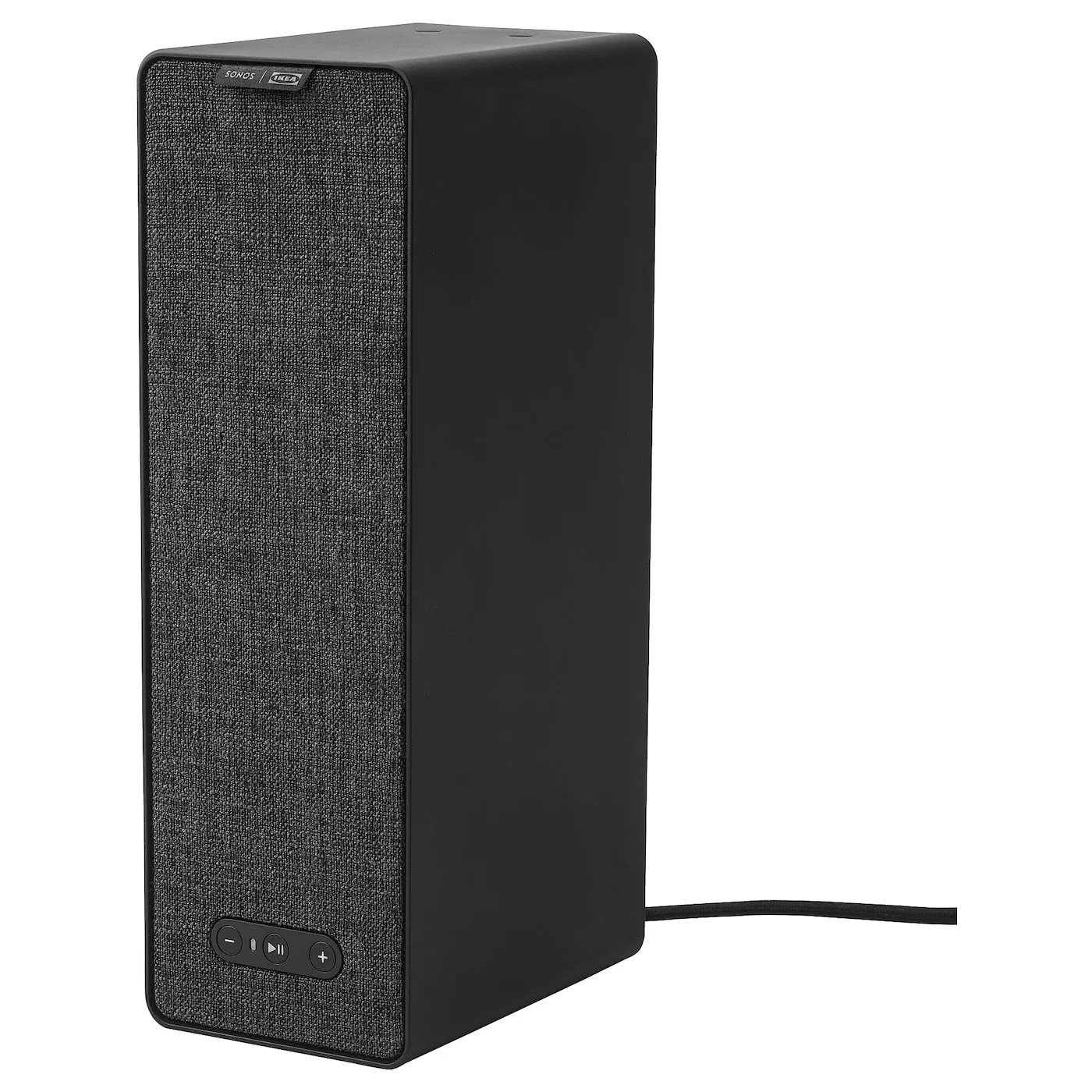 IKEA
IKEASymfonisk Bookshelf Speaker (Gen 2)
The Symfonisk Bookshelf Speaker (Gen 2) is a joint collaboration between Sonos and Ikea. The speaker works exactly like Sonos’s One SL speaker (and the now phased-out Play:1), but at $120, it’s the cheapest Sonos speaker you can buy. It’s also unique, able to stand upright or be mounted horizontally on the wall; if the latter, it can function as an actual bookshelf and support the weight of several actual books. It’s worth noting that the Symfonisk Bookshelf Speaker doesn’t sound quite as good as Sonos’s One SL speaker, nor does it have the same build quality. It’s available in white or black, and it can only be purchased from Ikea.
If you’re looking to wall mount the Symfonisk Bookshelf speaker, Ikea sells the necessary brackets and screws separately. The wall brackets ($20) enable you to horizontally mount the speaker, and will the purchase you’ll get a silicone pad to place on top of the speaker. You can also purchase a speaker hook ($10) to hang the speaker on a rail.
(Note: Sonos and Ikea released the second generation of this speaker in early 2022. It’s exactly the same, only updated with a new processor, more memory and a longer power cable. )
- Drivers: one tweeter, mid-woofer
- Amplification: two class-D digital amplifiers
- Connectivity: Wi-Fi, Ethernet, AirPlay 2
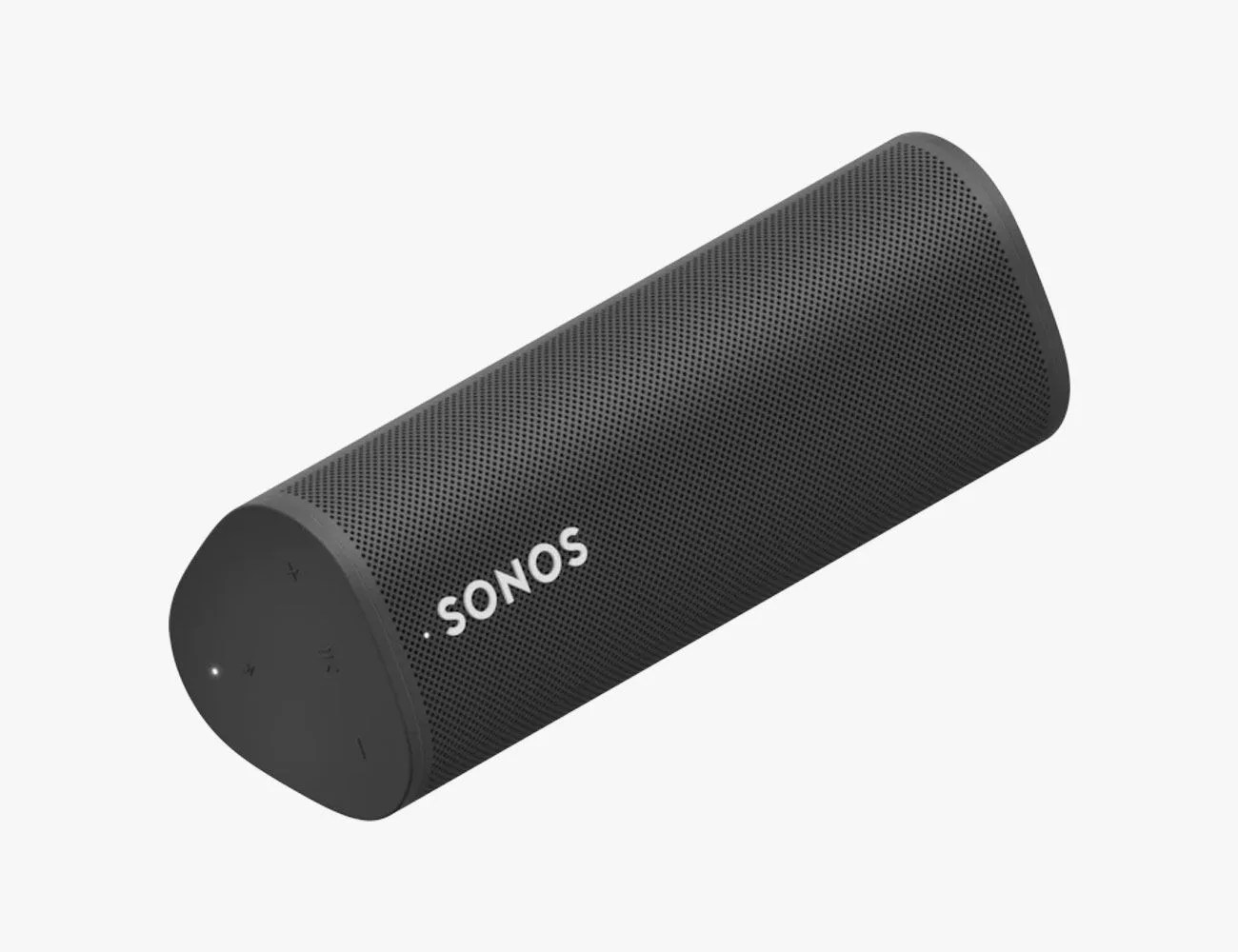 Sonos
SonosSonos Roam
The Sonos Roam is the company’s smallest and most portable speaker. It has both Bluetooth and Wi-Fi connectivity, so you can use it as a portable Bluetooth speaker or integrate it into a larger Sonos multi-room system. It has Automatic Trueplay when streaming via both Bluetooth and Wi-Fi, too. Sonos combined the Wi-Fi and Bluetooth antennas inside of Roam which gives it some abilities that are unusual in the Sonos line. For instance, it can allow you to hook a Bluetooth record player up to your Sonos system. Additionally, the Roam has a IP67 ratings, making it a little more rugged and water-resistant than the Move.
(Note: in May 2022, Sonos introduced the Roam in three new colors: olive, wave (light blue) and sunset (orange). They cost $179, same as the black or white models.)
- Drivers: one tweeter, one mid-woofer
- Amplification: two Class-H digital amplifiers
- Connectivity: Wi-Fi, AirPlay 2
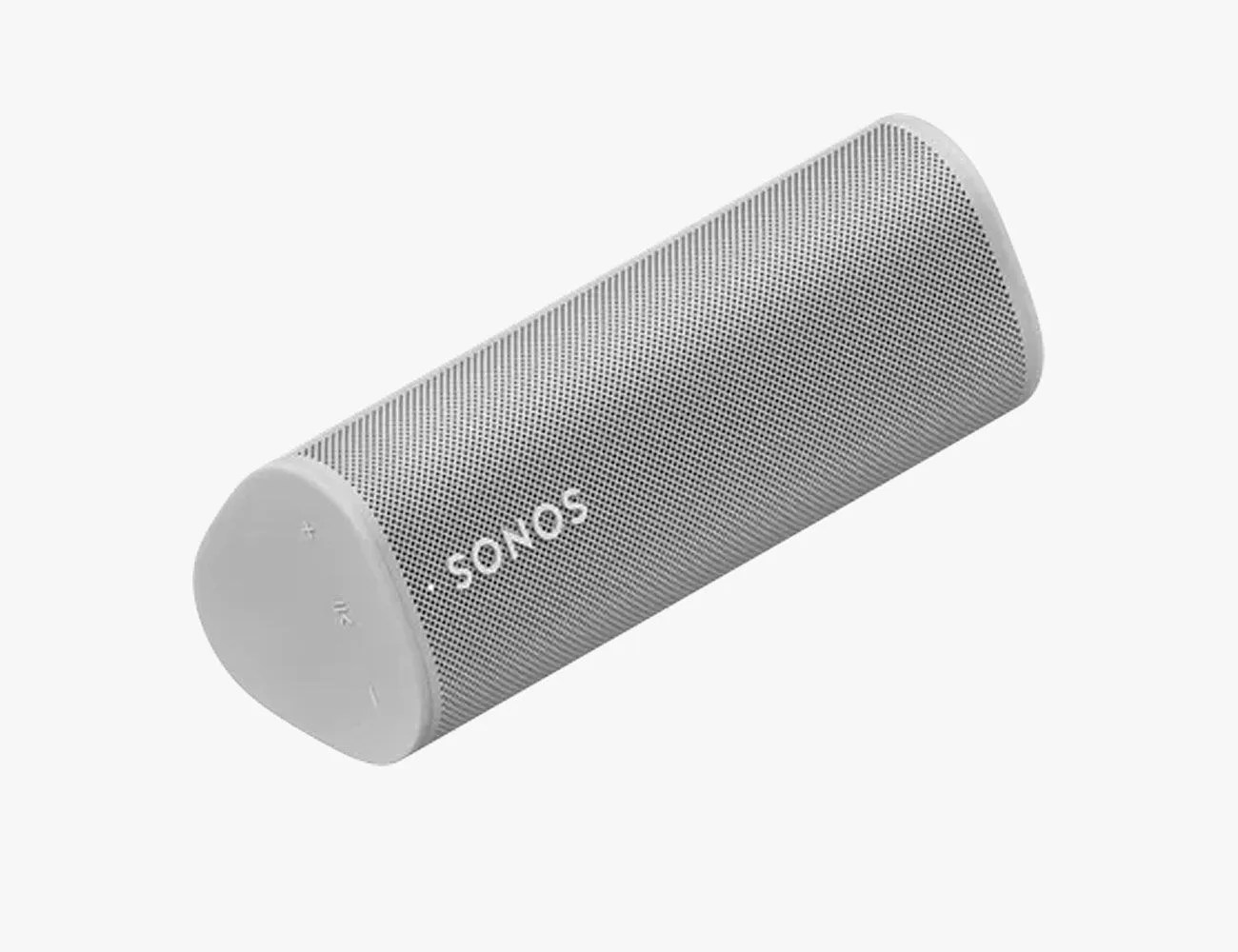 Sonos
SonosSonos Roam SL (Discontinued)
Released in March 2022, the Roam SL is a microphone-free version of the Roam (above) and it comes with a few tradeoffs. It can’t hear your Alexa or Google Assistant voice commands. It doesn’t support Automatic Trueplay, so it won’t optimize its sound for the space it’s in. And it doesn’t support Sound Swap, a feature that allows you to quickly and easily transfer music from your Roam (but not the Roam SL) to the closest Sonos speaker without stopping the music. Other than that, the Roam SL is exactly the same as the Roam. And it’s $20 cheaper.
- Drivers: one tweeter, one mid-woofer
- Amplification: two Class-H digital amplifiers
- Connectivity: Wi-Fi, AirPlay 2
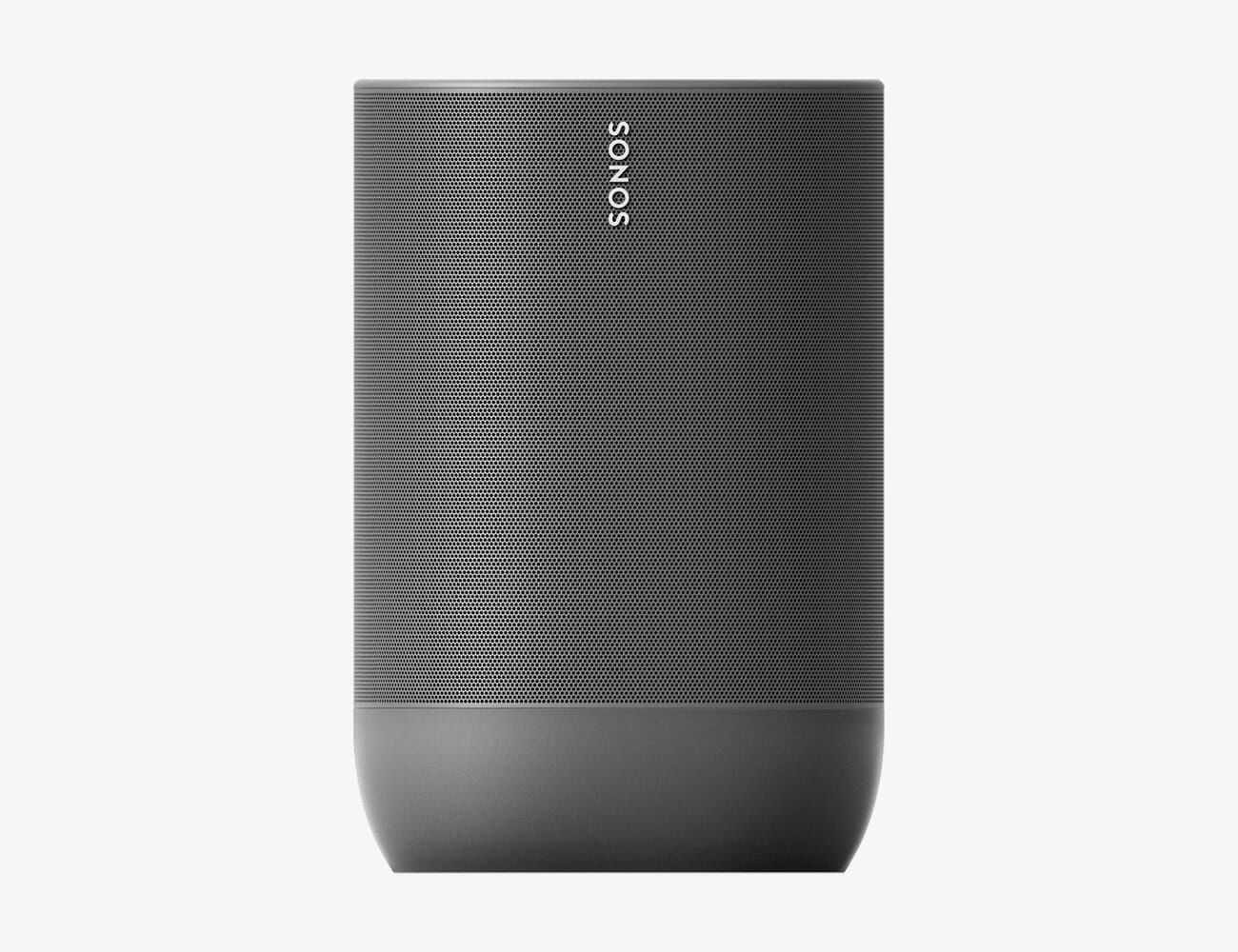 Sonos
SonosSonos Move
The Move is Sonos’s first portable speaker and it has both built-in Wi-Fi and Bluetooth. When connected to Wi-Fi, it works almost exactly like a Sonos One: it can play in a Sonos multi-room system and respond to either Alexa or Google Assistant voice commands. (The one difference is that the Move cannot be designated as a rear-channel speaker in a home theater system.) A button on its back turns it into a portable Bluetooth mode, so you can take the speaker – it’s drop-resistant and IP56-rated – anywhere outside the home. Unlike every other Sonos speaker before it, the Move has automatic Trueplay, meaning it automatically optimizes its sound for the space it’s in.
- Drivers: one downward-firing tweeter, one mid-woofer
- Amplification: two Class-D digital amplifiers
- Connectivity: Wi-Fi, Ethernet, AirPlay 2
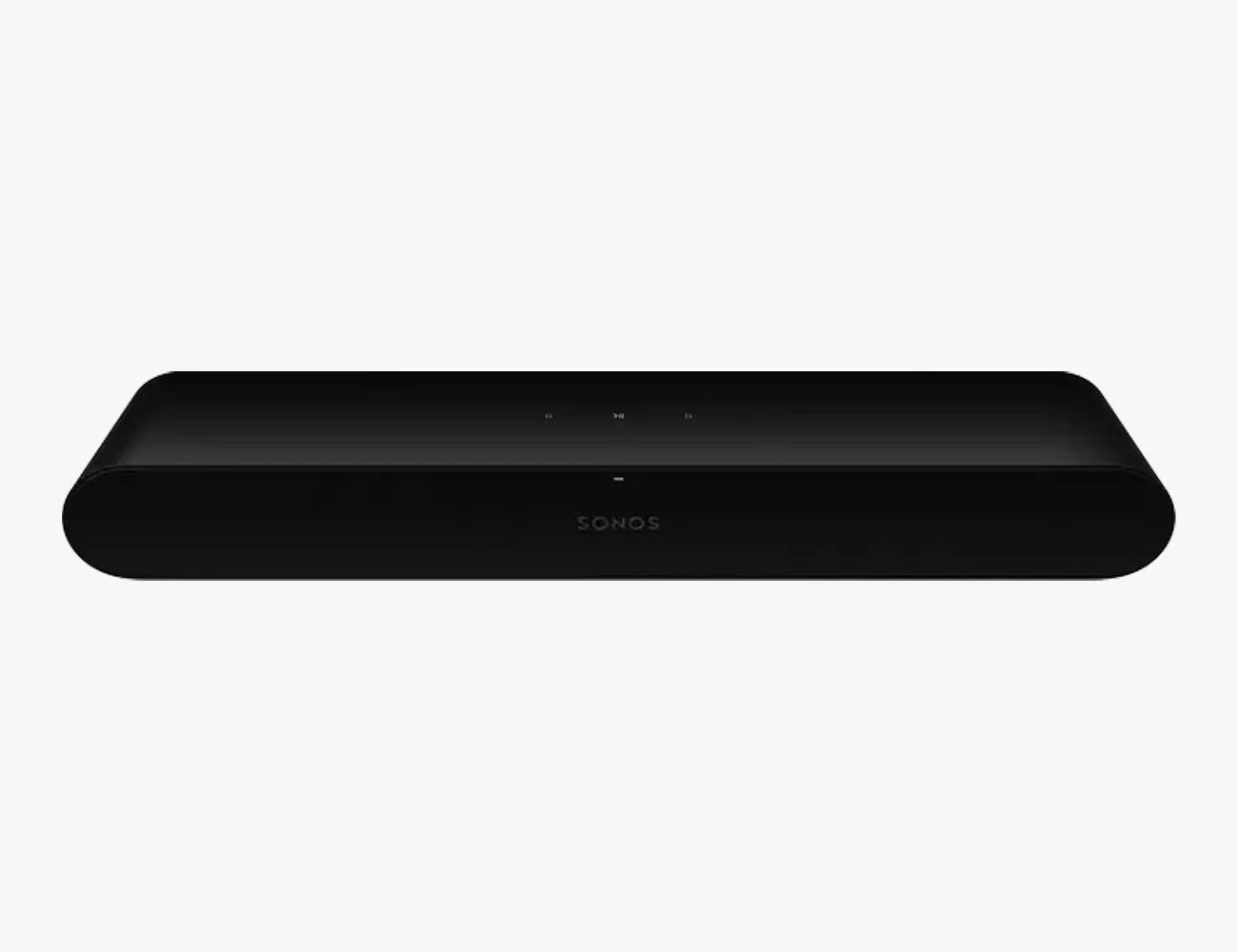 Sonos
SonosSonos Ray
Released in 2022, the Sonos Ray is the company’s newest, smallest and most affordable soundbar — and the only one that doesn’t support Dolby Atmos. Unlike the Arc and Beam (Gen 2), the Ray doesn’t have built-in mics and can’t function as a smart speaker (there’s no support for “Hey Alexa” or “Hey Google” voice commands). It also connects to your TV via optical rather than HDMI, meaning it’s better suited for smaller and older TVs. The good news is it still sounds great for its size and it can be integrated into a larger Sonos multi-room or home theater.
- Drivers: two tweeters, two high-efficiency mid-woofers
- Amplification: four Class-D digital amplifiers
- Connectivity: Wi-Fi, Ethernet, AirPlay 2
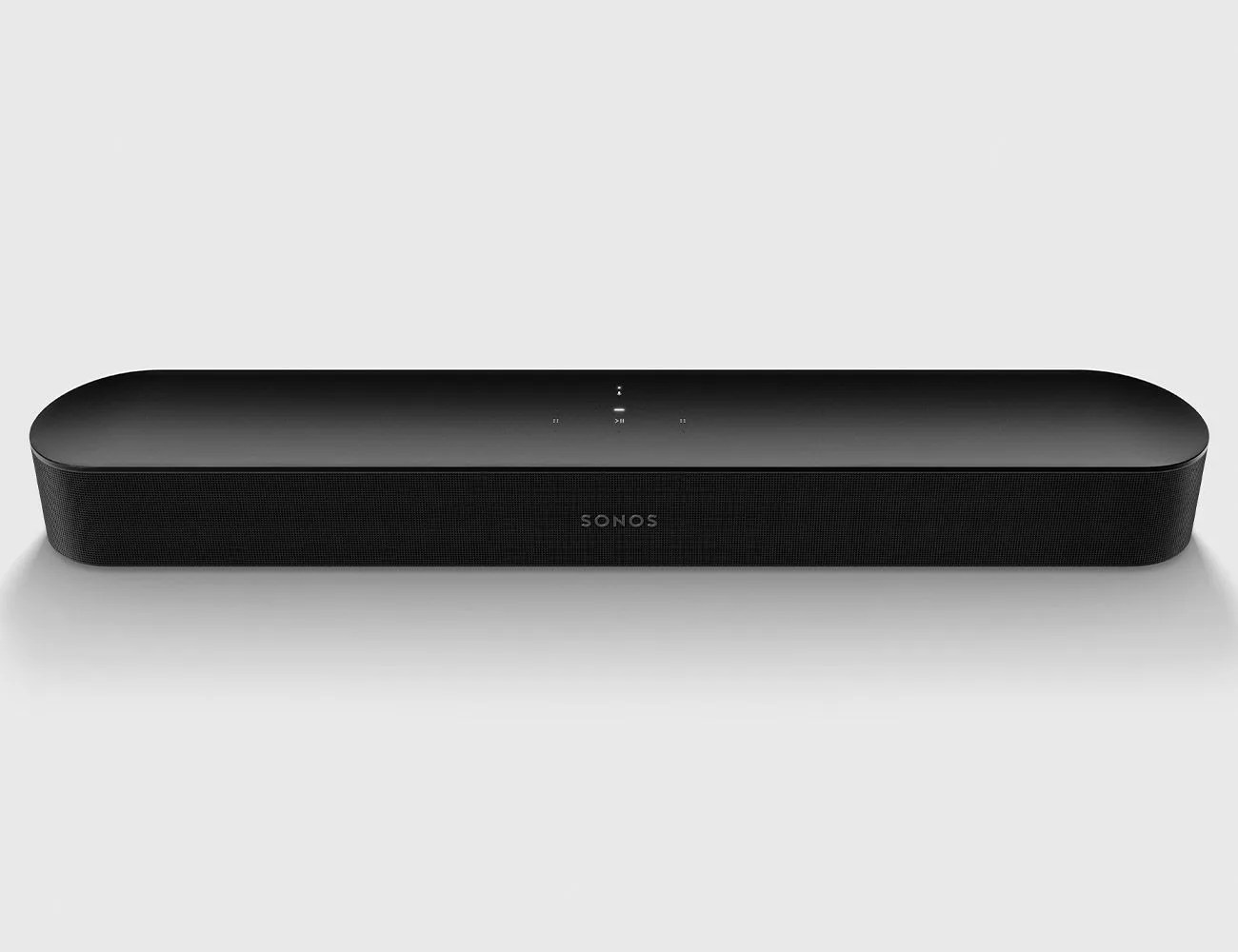 Sonos
SonosSonos Beam, Gen 2
-
$499.00 (20% off)
Sonos announced the second generation of its compact soundbar in September 2021 and it’s a big upgrade over the original Beam because it supports Dolby Atmos. It lacks upward-firing drivers (like the Arc), but it’s able to create virtual height channels and deliver a more immersive experience thanks to its advanced CPU (which is 40-percent faster than the original Beam’s CPU). Sonos gave the new Beam an eARC connection (instead of ARC) and a new polycarbonate grille (instead of fabric), but other than that the new Beam looks basically identical and has the same capabilities as its predecessor. Sonos also made it $50 more expensive.
- Drivers: one tweeter, four full-range woofers, three passive radiators
- Amplification: five Class-D digital amplifiers
- Connectivity: Wi-Fi, Ethernet, optical, Amazon Alexa, AirPlay 2
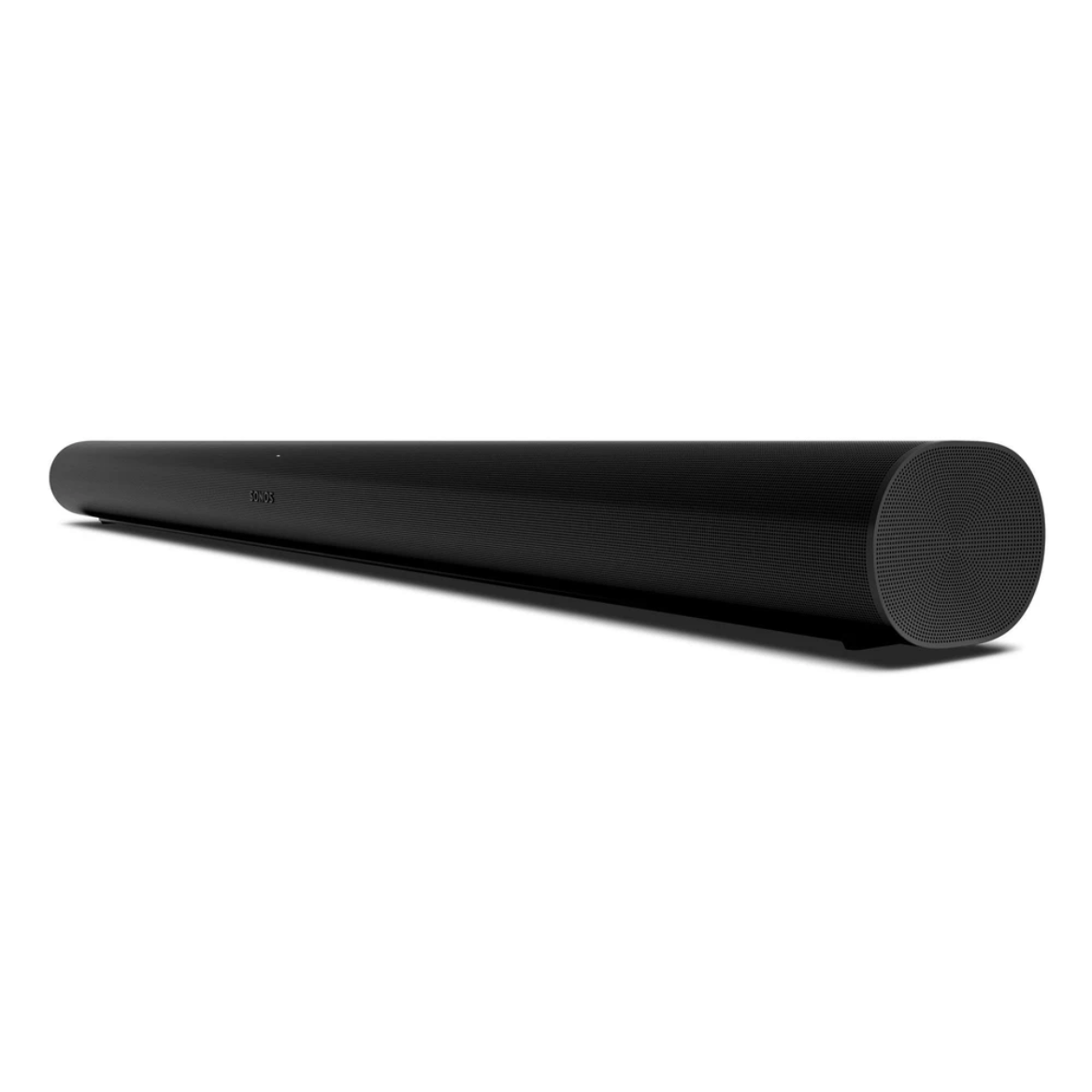 Sonos
SonosSonos Arc
-
$900.00 (0% off)
Released in mid-2020, the Arc is Sonos’s premium Dolby Atmos soundbar that takes the place of the 8-year-old Playbar and the 3-year-old Playbase (neither of which Sonos will continue to make). It has a grand total of 11 high-performance drivers, two of which are upward-firing to enable those vertical high channels for Dolby Atmos. It also supports Sonos’s Trueplay tuning technology and is able to automatically adjust its sound based on the home theater set-up and what’s playing, whether that’s stereo, Dolby Digital 5.1, or Dolby Atmos sound. The Arc features a 270-degree rounded plastic grille and comes in either matte black and matte white. It can be placed in front of a standing TV or wall-mounted. Sonos will release a specialized mounting unit ($79) that uses magnetic sensors so it knows if it’s mounted or not. It has a single HDMI eARC or ARC connection, so setup should be super simple. It’s also a smart speaker, just like the Beam, so you can control it with your voice using Amazon Alexa or Google Assistant. It supports AirPlay 2 as well.
- Drivers: three silk-dome tweeters, eight elliptical woofers
- Amplification: 11 Class-D digital amplifiers
- Connectivity: Wi-Fi, Ethernet, optical
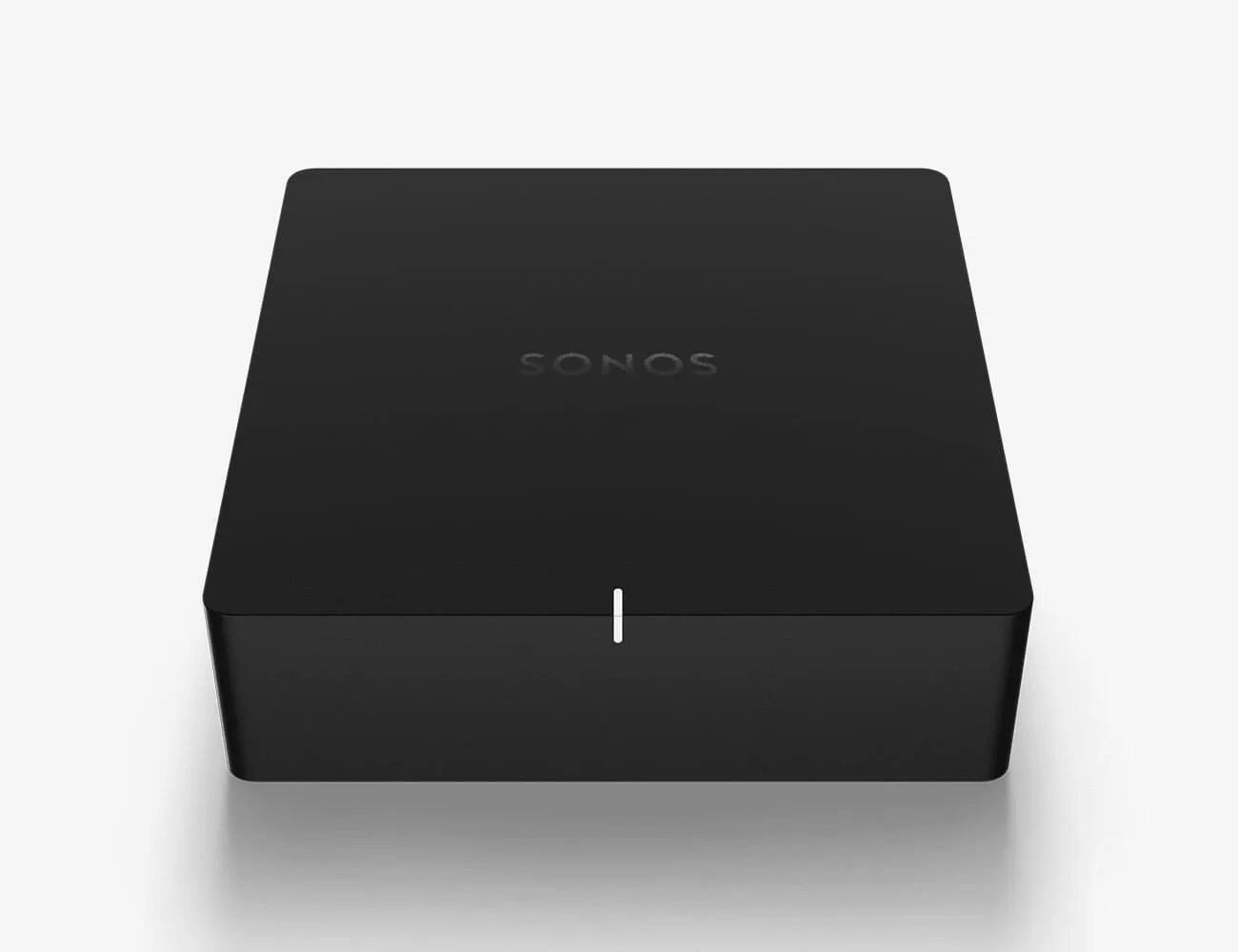 Sonos
SonosSonos Port
The Port is one of two Sonos gadgets designed to connect non-Sonos equipment into a Sonos system. It works by hooking up to your existing stereo or receiver and turning your non-Sonos sound system into one that works just like it, but the Port adds some big things. First, it supports AirPlay 2. Second, it has a 12-volt trigger, which enables the Port to automatically turn on your connected receiver when signaled through the Sonos app. And third, it’s matte black and actually looks like it will blend in with your other stereo components. The Sonos Port costs $399 and was released in early 2020.
- Drivers: N/A
- Amplification: N/A
- Connectivity: Wi-Fi, AirPlay 2, Ethernet (x2)
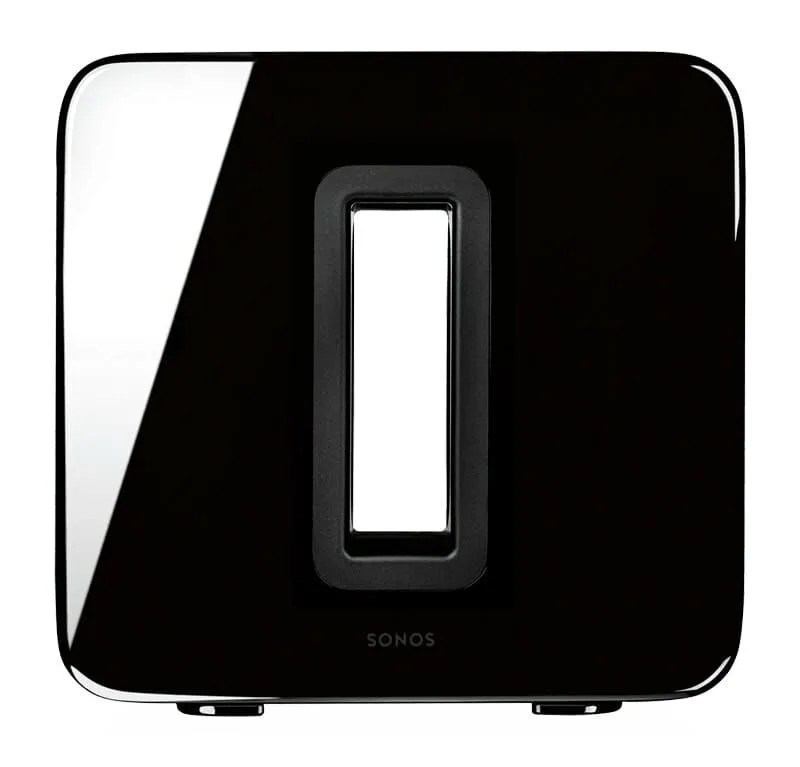 Sonos
SonosSonos Sub, 3rd Gen
The Sub is the company’s only wireless subwoofer. The Sub wirelessly connects to any Sonos speaker or Sonos Amp, and it can be part of a multi-room or a home theater system, and just like Sonos’s other speakers, the Sub won’t pair with non-Sonos speakers unless you have one of Sonos’s own amps (see below). The real beauty of the Sub is it’s very easy to set up, and it will improve any Sonos system; you can also fine-tune the levels of bass with the Sonos app. If there are downsides, it’s the Sub is pretty expensive and large.
- Drivers: two force-canceling speaker drivers
- Amplification: two Class-D digital amplifiers
- Connectivity: Wi-Fi, ethernet
 Sonos
SonosSub Mini
The Sub Mini is essentially a smaller and more affordable version of the current Sub. It weighs 14 pounds, compared to the Sub’s 36 pounds, but it works it much the same way: with dual force-cancelling woofers. There are a few other differences with the Sub Mini. It has a cylindrical shape and needs to be stood vertically (you can’t rest it on its side like the Sub). It has a sealed rather than ported design. And you can only pair one Sub Mini with a soundbar, whereas you can use two Subs with the Arc. Sonos recommends pairing the Sub Mini with its Ray or Beam (Gen 2) soundbars, or with a pair of Ones.
- Drivers: two force-canceling speaker drivers
- Amplification: two Class-D digital amplifiers
- Connectivity: Wi-Fi, ethernet
Read our review of the Sub Mini, here.
 Ikea
IkeaSymfonisk Table Lamp (Gen 2)
The Symfonisk Table Lamp is, just like the Symfonisk Bookshelf Speaker, a joint collaboration between Sonos and Ikea. The speaker works and sounds similar to Sonos’s One SL speaker, but it also functions as a lamp (if you couldn’t tell). With this second-generation model, Ikea gives you the option to buy it with one of two lamp bases (in either white or black) and one of two lampshades: one glass and one a see-through textile. It’s really an ideal Sonos speaker to place on a nightstand or anyplace where you want a speaker, but don’t want it to look like you have a speaker there.
- Drivers: one tweeter, mid-woofer
- Amplification: two class-D digital amplifiers
- Connectivity: Wi-Fi, Ethernet, AirPlay 2
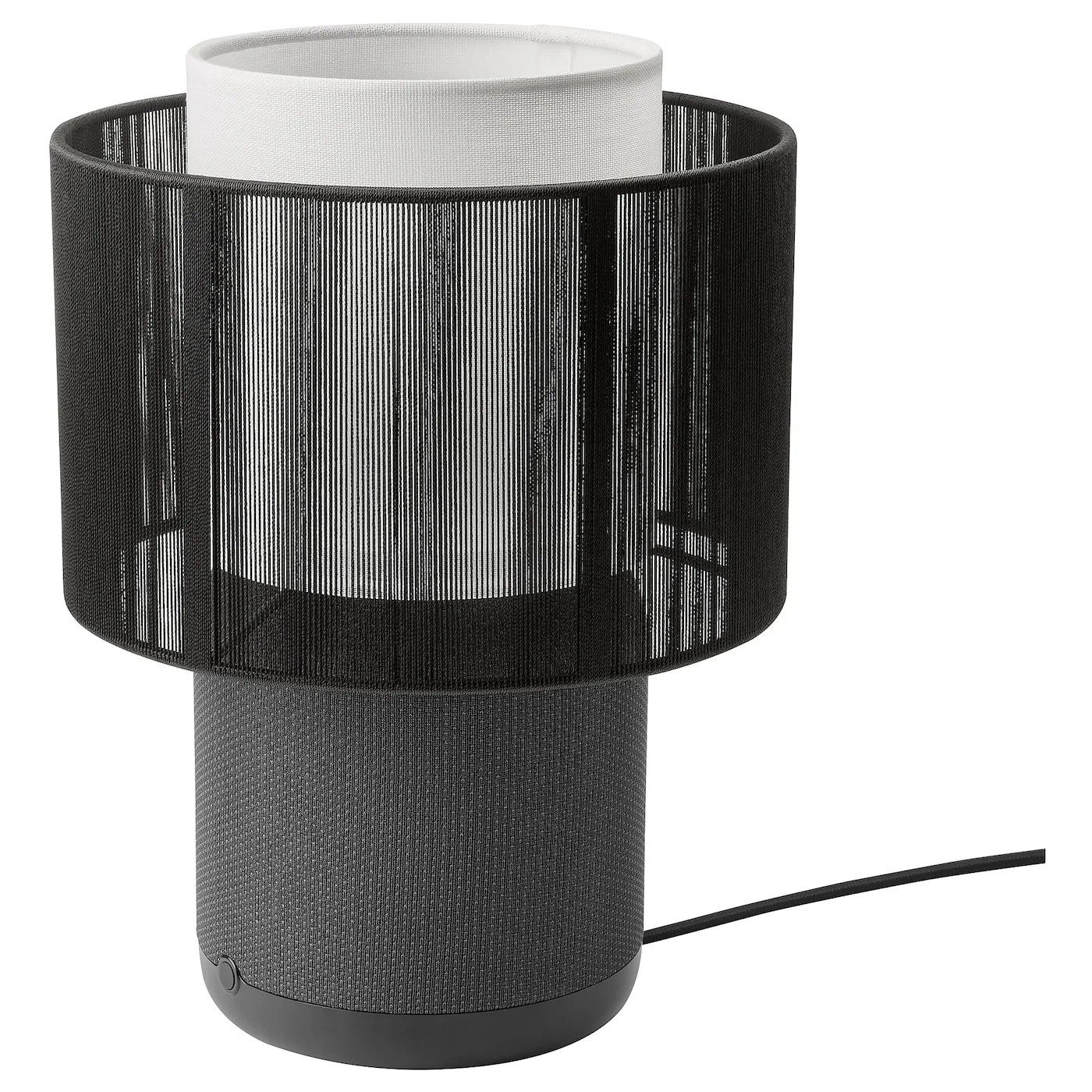 IKEA
IKEASymfonisk Table Lamp, Gen 2
Sonos and Ikea announced the second generation of their table lamp speaker. It’s different from the previous model in that Ikea is now giving you the option to buy one of two lamp bases (in either white or black) and then you can pair it with one of two lampshades: one glass and one a see-through textile. The lamp base will cost $140, while the glass and textile lampshades will cost $39 and $29, respectively, putting the total cost right around $179 of the original. Just like before, the base of the table lamp will work just like a Sonos One SL speaker (no built-in voice assistant).
- Drivers: one tweeter, mid-woofer
- Amplification: two class-D digital amplifiers
- Connectivity: Wi-Fi, Ethernet, AirPlay 2
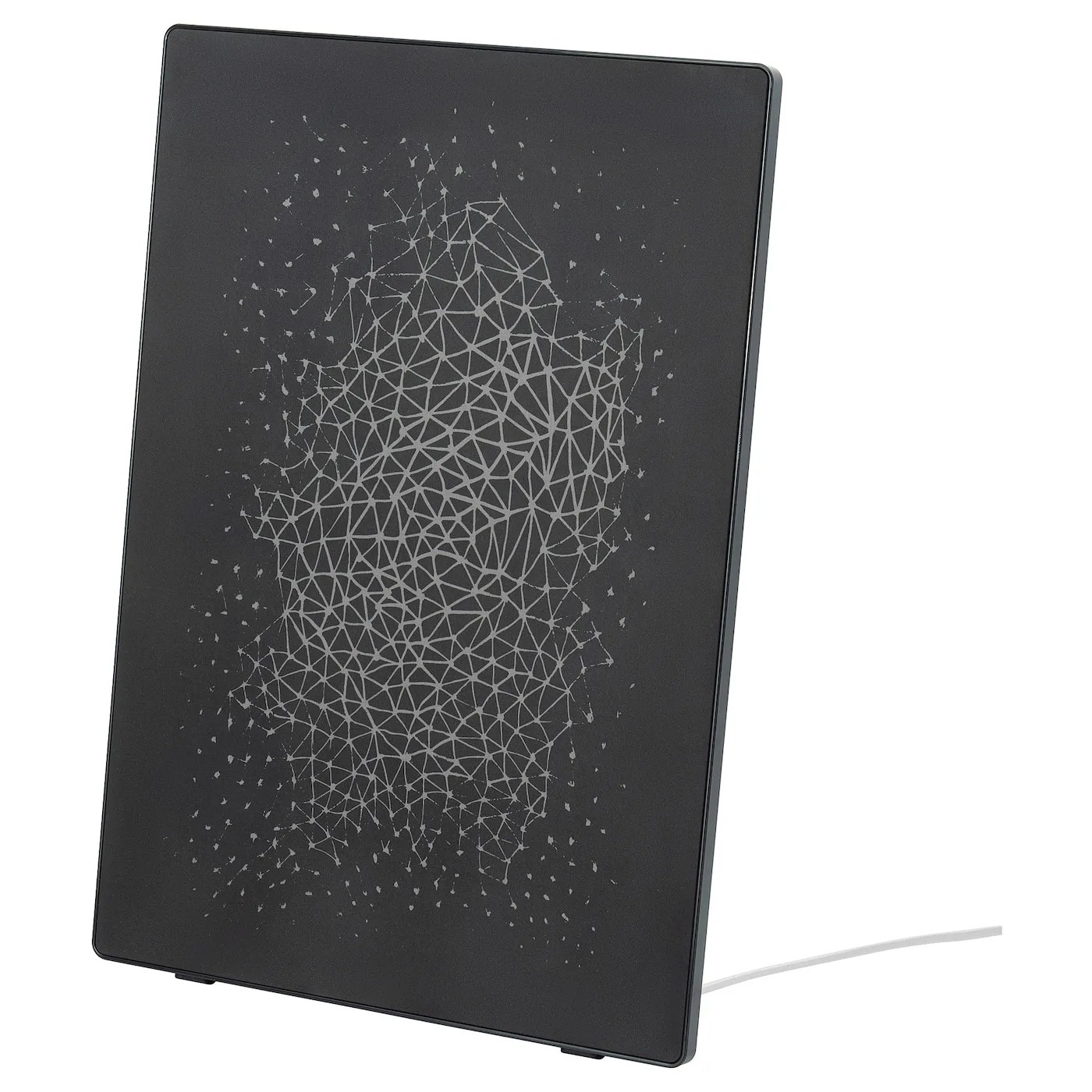 IKEA
IKEASymfonisk Picture Frame Speaker
Released in mid-2021, the Picture Frame Speaker is the latest speaker in Ikea and Sonos’s collaborative Symfonisk line. It’s designed to be hung on your wall, in either landscape or portrait mode, and look like a piece of art. It does have rubber feet, too, if you want to lean it against the wall instead. The “art” of the speaker is actually its grille, which you can pop off and replace with different art that you can buy from Ikea or third-party sellers. The speaker works just like any Sonos speaker and sounds on par with One. It can be stereo paired with another Symfonisk Picture Frame Speaker, too.
- Drivers: one tweeter, mid-woofer
- Amplification: two class-D digital amplifiers
- Connectivity: Wi-Fi, AirPlay 2
 Sonos
SonosSonos Amp
The Amp works like the Sonos Port, except it’s also an amp with an HDMI ARC port. This allows you to connect your passive bookshelf speakers to a Sonos system or to your TV, just like a Sonos Beam. That means if you have other Sonos speakers, you can play your TV’s audio through them without having one of Sonos’s soundbars.
- Amplification: Class-D digital amplifier (125-watts per channel at 8 ohms)
- Connectivity: Wi-Fi, Ethernet, analog (RCA), digital (optical and coaxial)
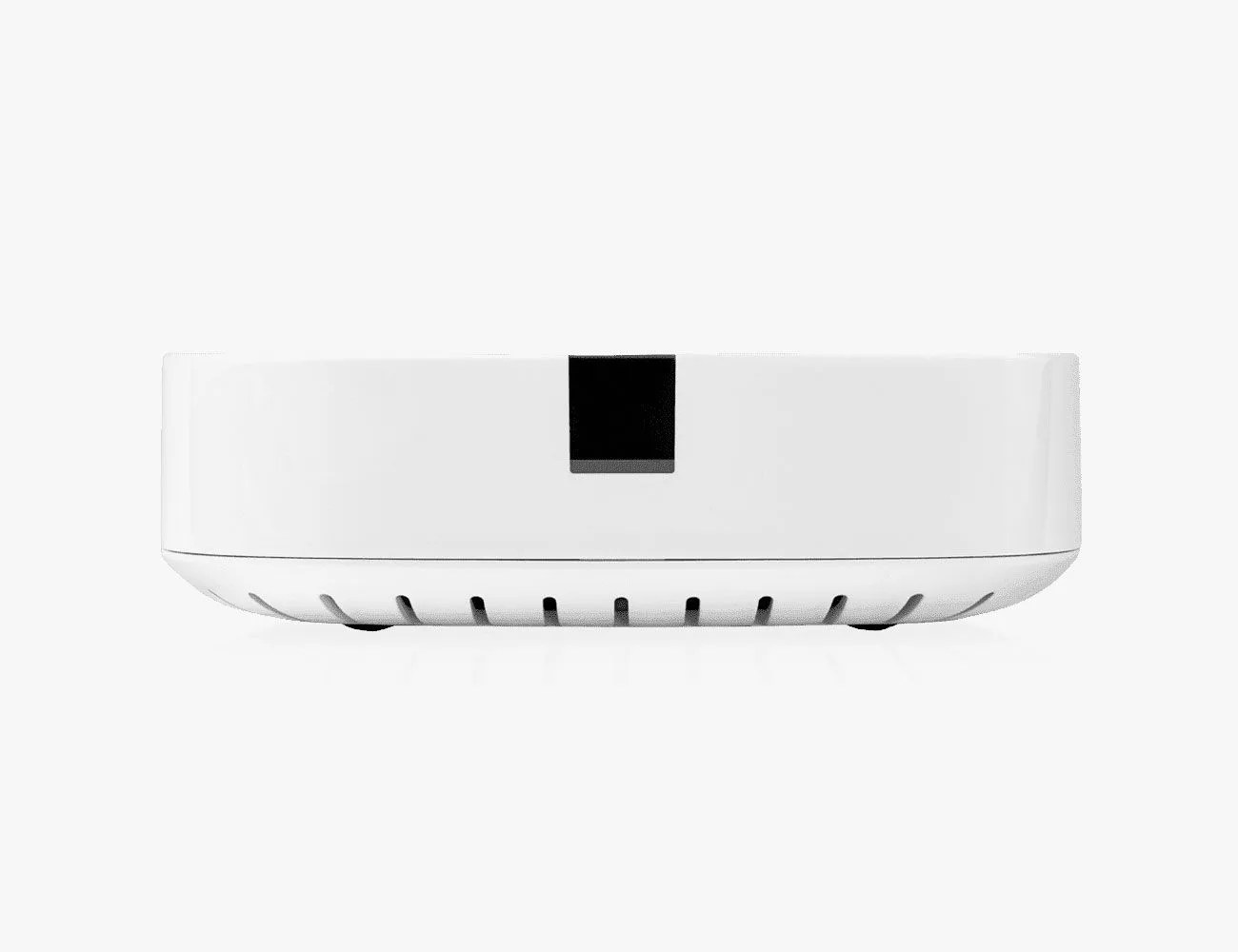 Sonos
SonosSonos Boost
The Boost might be the most misunderstood product that Sonos sells. (And maybe it’s most important.) It connects directly to your home’s router and creates its own Wi-Fi mesh network, just like a Google Wi-Fi or an Eero hub, but this new wireless mesh network only works with Sonos speakers — and it prioritizes audio quality over everything else. If you have a large home with spotty Wi-Fi, or you just want to make sure your Sonos is playing at its highest possible resolution, this is the $99 gadget you should invest in.
- Connectivity: Ethernet
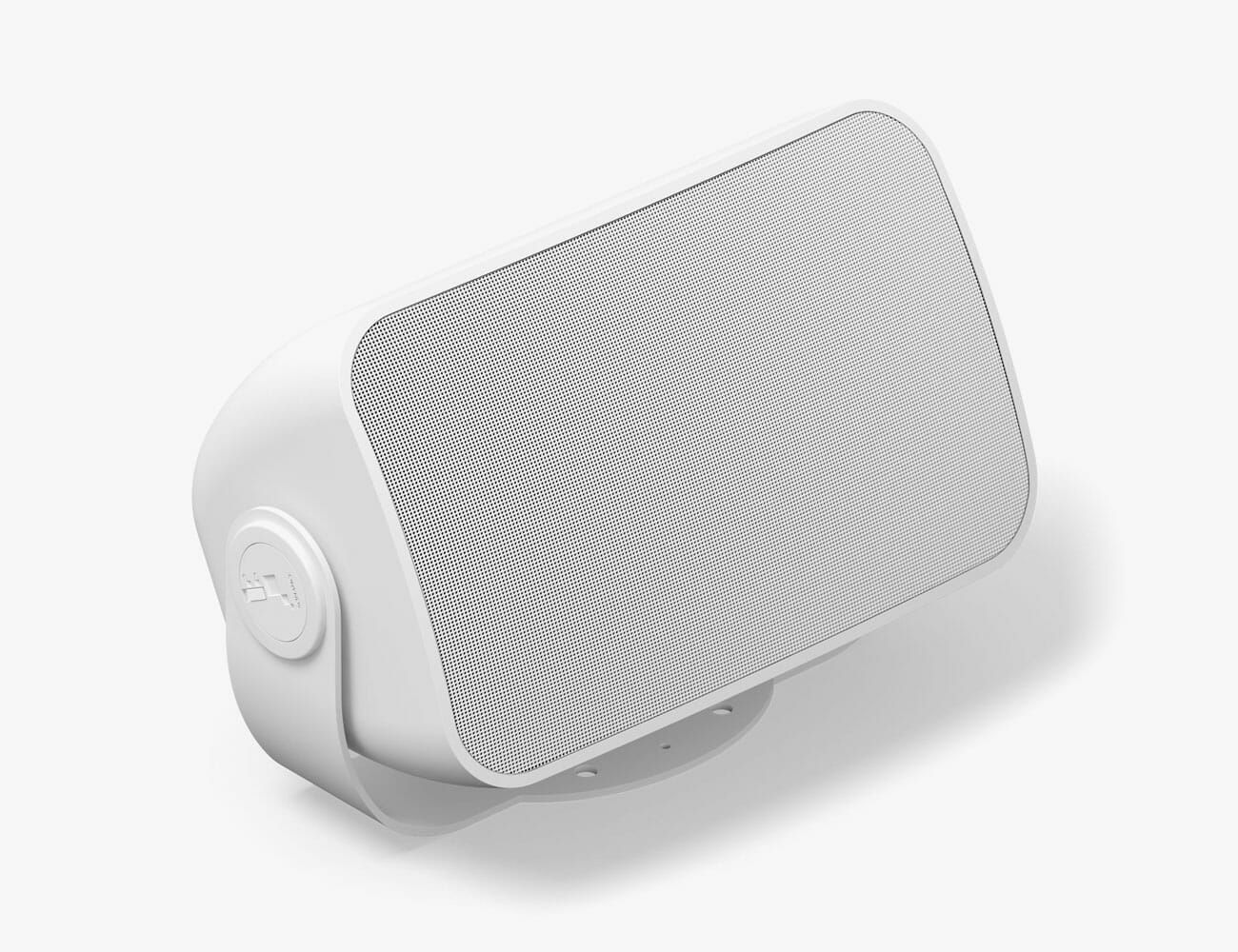 Sonos
SonosSonos Architectural by Sonance
People have long used Sonos’s wireless amps to stream audio to their old speakers. More specifically, they used them to stream music to speakers that were built into their homes, either in the ceiling or in the wall. Now, in early 2019, there are non-Sonos speakers that are specifically designed to work with the Amp. Sonos announced a partnership with Sonance, a reputable audio company known for its in-wall and in-ceiling speakers, and now you can deck out your home with “invisible” speakers that work just like Sonos. The Sonos In-Wall by Sonance ($599 per pair), Sonos In-Ceiling by Sonance ($599 per pair), and the Sonos Outdoor by Sonance ($799 per pair) are be the first third-party speakers to be compatible with Sonos’s TruePlay tuning technology. The catch is these speakers require a Sonos Amp to work, which needs to be purchased separately.
- Amplification: requires Sonos Amp
- Connectivity: Wi-Fi
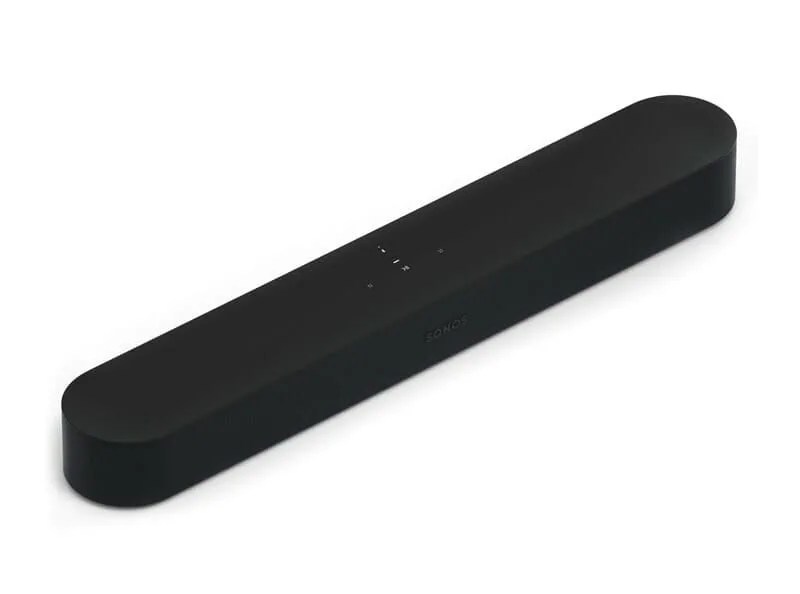 Sonos
SonosSonos Beam, Gen 1 (Discontinued)
-
$319.00 (91% off)
Replaced by: Sonos Beam, Gen 2
Sonos is phasing out the 2018-released Beam now that it has released a new and improved version: the Beam (Gen 2). This older version is very similar to the new model but lacks a polycarbonate grille, the newer eARC connection and support for Dolby Atmos. But it’s still an excellent compact soundbar that supports Alexa or Google Assistant voice assistants, and can be integrated in a Sonos multi-room or home theater system. It’s not a bad option if you can get a good deal on it.
- Drivers: one tweeter, four full-range woofers, three passive radiators
- Amplification: five Class-D digital amplifiers
- Connectivity: Wi-Fi, Ethernet, optical, Amazon Alexa, AirPlay 2
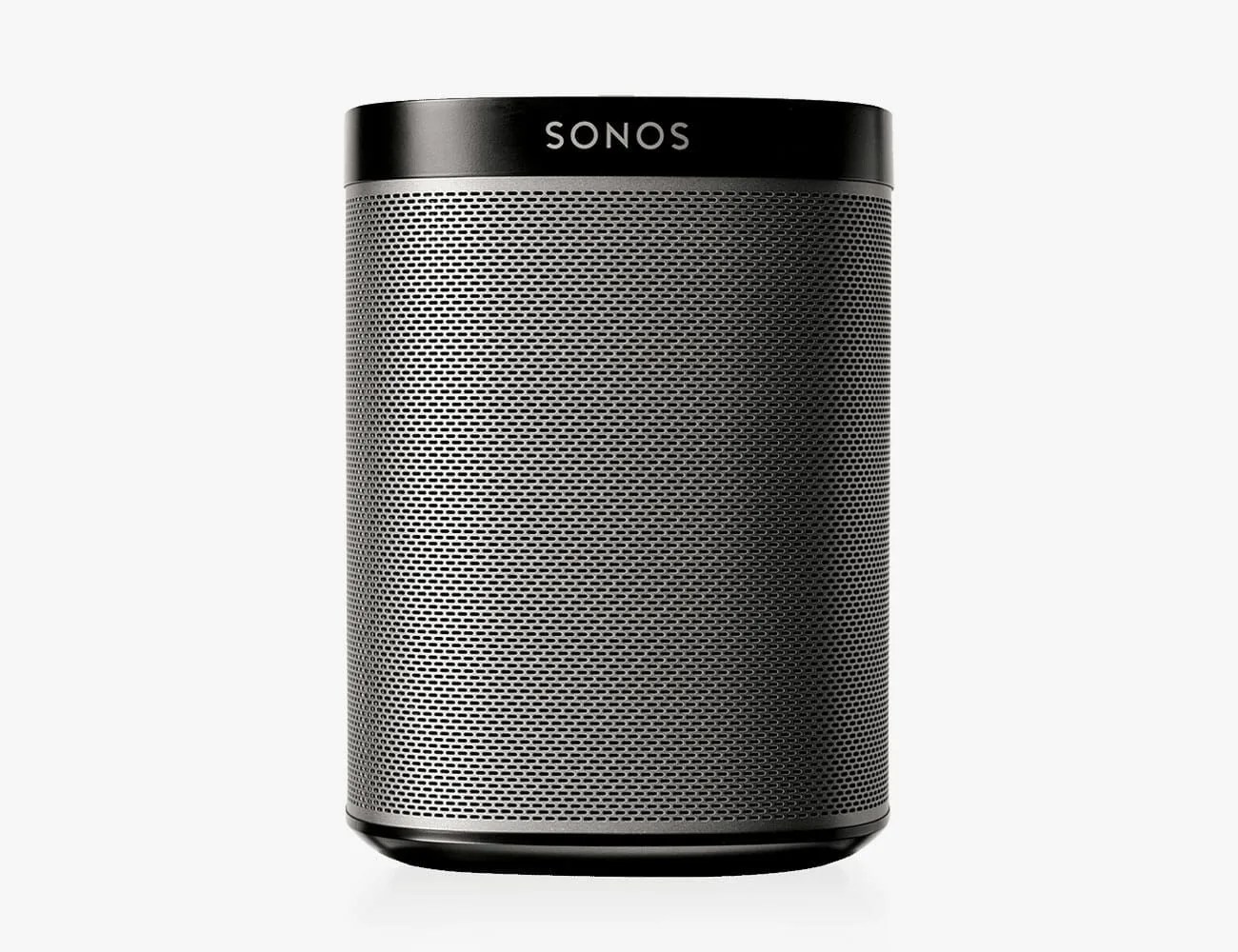 Sonos
SonosSonos Play:1 (Discontinued)
Replaced by: Sonos One, Sonos One SL
The Play:1 is the company’s original small and powered wireless speaker. Sonos doesn’t make them anymore — as they’ve been antiquated and replaced by the One SL — but you can still find and buy the Play:1 online (however, they’re normally really expensive and there’s no good reason to get one unless you found it for cheap). As for sound, the Play:1 is impressive for its size. It’s naturally a mono speaker, but you can pair two Play:1 speakers together and, through the app, create that stereo sound. You can also designate two Play:1 speakers as surround speakers in 5.1 home theater system.
- Drivers: one mid-woofer, one tweeter
- Amplification: two Class-D digital amplifiers
- Connectivity: Wi-Fi, Ethernet
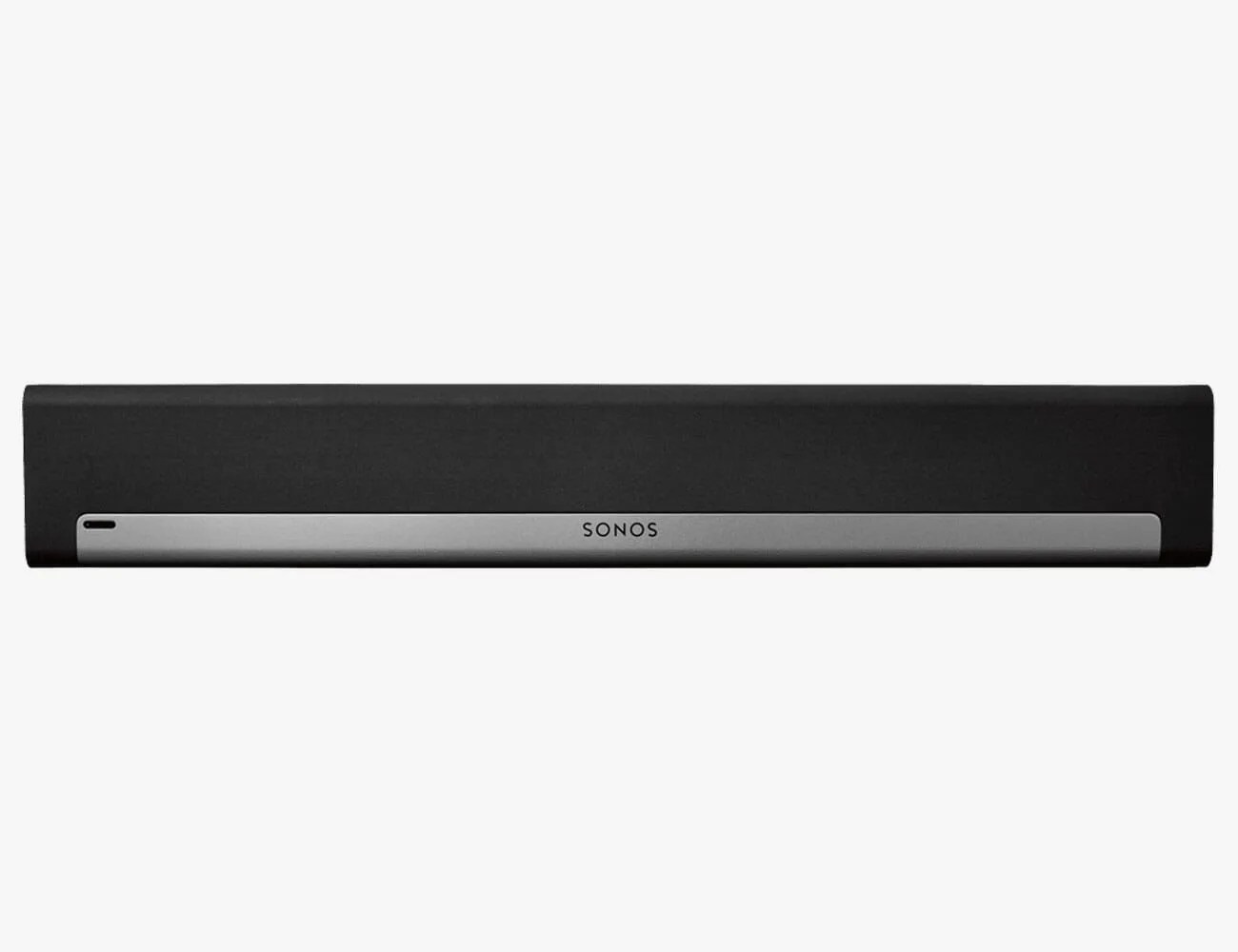 Sonos
SonosSonos Playbar (Discontinued)
Replaced by: Sonos Arc
The Playbar is the company’s first soundbar, released in 2013, and has since been replaced by Arc. (Sonos is phasing out the Playbar.) It uses a single optical cable to your TV and it effectively replaces your TV speakers. The neat thing, as is true with all other Sonos soundbars, is that it can connect to all other Sonos speakers in your home; you can have your TV’s audio playing through the entire house or you can integrate those other Sonos speakers in a home theater system (the max all-Sonos system is 3.1.2 or 5.1.2 setup). There are a couple of downsides to the Playbar. It’s the oldest of the company’s soundbars and doesn’t support AirPlay 2. It doesn’t support Dolby Atmos. And there’s no HDMI connection option, meaning it might not be as future-proof as other soundbars.
- Drivers: three tweeters, six mid-woofers
- Amplification: nine Class-D digital amplifiers
- Connectivity: Wi-Fi, Ethernet, optical
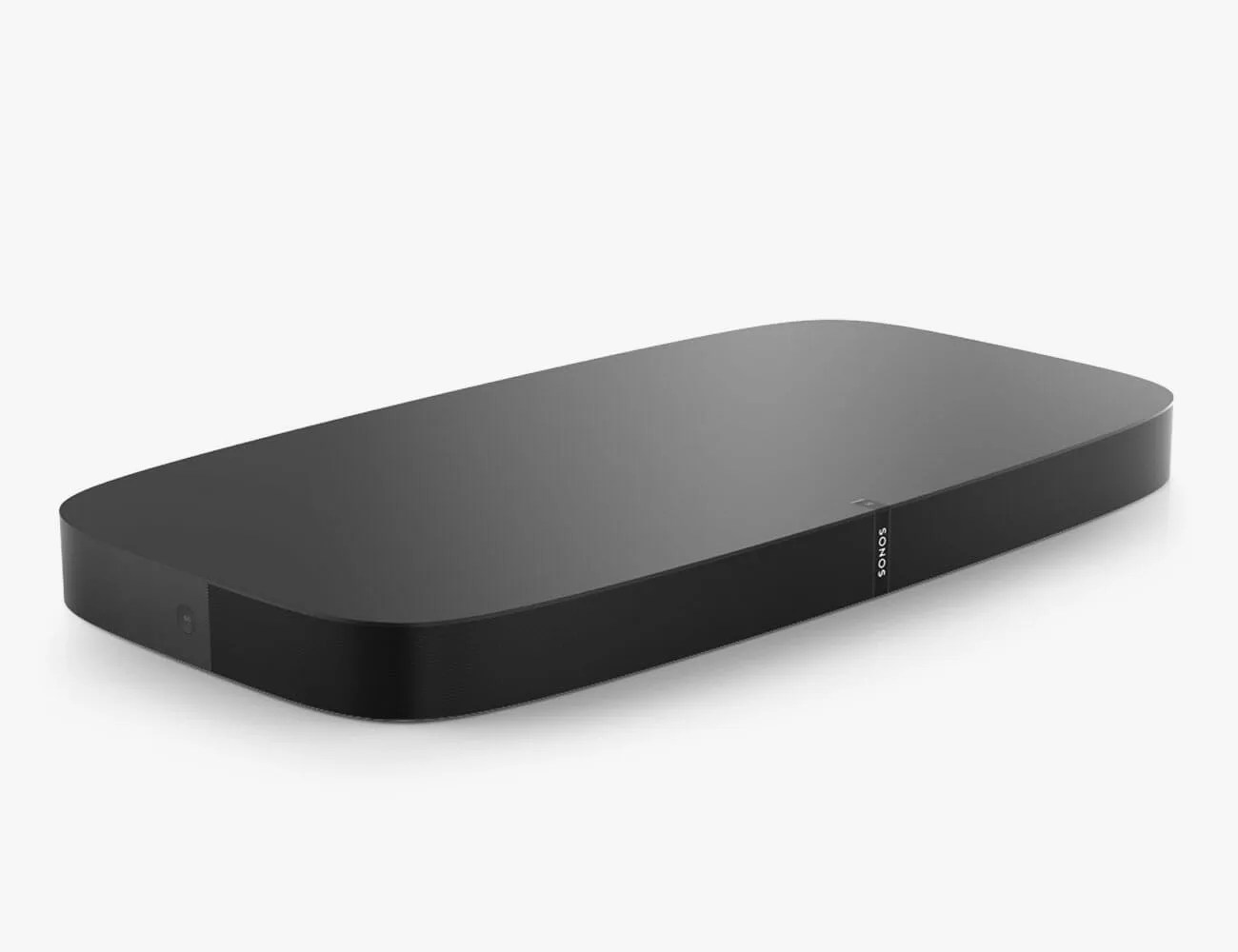 Sonos
SonosSonos Playbase (Discontinued)
Replaced by: Sonos Arc
The Playbase is a sound base (so it sits underneath your TV) that was released in 2017, but Sonos announced in 2020 that it would be phasing it out with the Playbar, in favor of the new Arc. You can still buy the Playbase on third-party websites, however, and it’s similar to Playbar in most ways, but it comes with a few advantages. It has a dedicated woofer, unlike the Playbar, so it naturally has more bass. And it supports AirPlay 2. (Again, the Playbase only has an optical TV connection. No HDMI.) Other than that, the main reason why people would choose the Playbase over the Playbar, or vice versa, comes down to shape.
- Drivers: three tweeters, six mid-range, one woofer
- Amplification: ten Class-D digital amplifiers
- Connectivity: Wi-Fi, Ethernet, optical, AirPlay 2
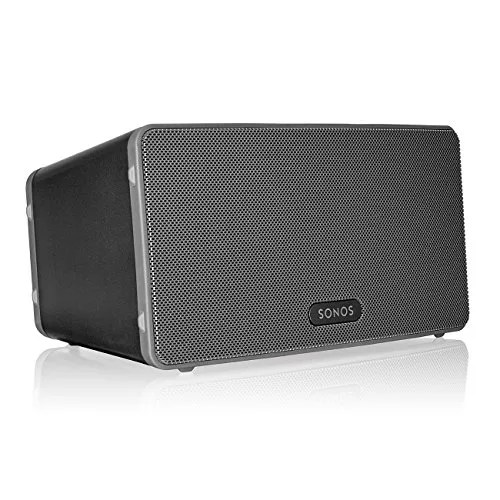 Amazon
AmazonSonos Play:3 (Discontinued)
Replaced by: Sonos Five
Sonos discontinued the Play:3 — a Goldilocks speaker between the Play:1 and Play:5 —you might see Play:3 speakers online, but Sonos doesn’t sell any new models anymore. The Play:3 can also output stereo without being paired with another Sonos speaker, just like the current Play:5. And just like the current Play:1 and One, two Play:3 speakers can be designed as rear surrounds in a home theater system. It doesn’t support AirPlay 2 like the newer generation of Sonos speakers.
- Drivers: one tweeter, two mid-woofers
- Amplification: three Class-D digital amplifiers
- Connectivity: Wi-Fi, Ethernet
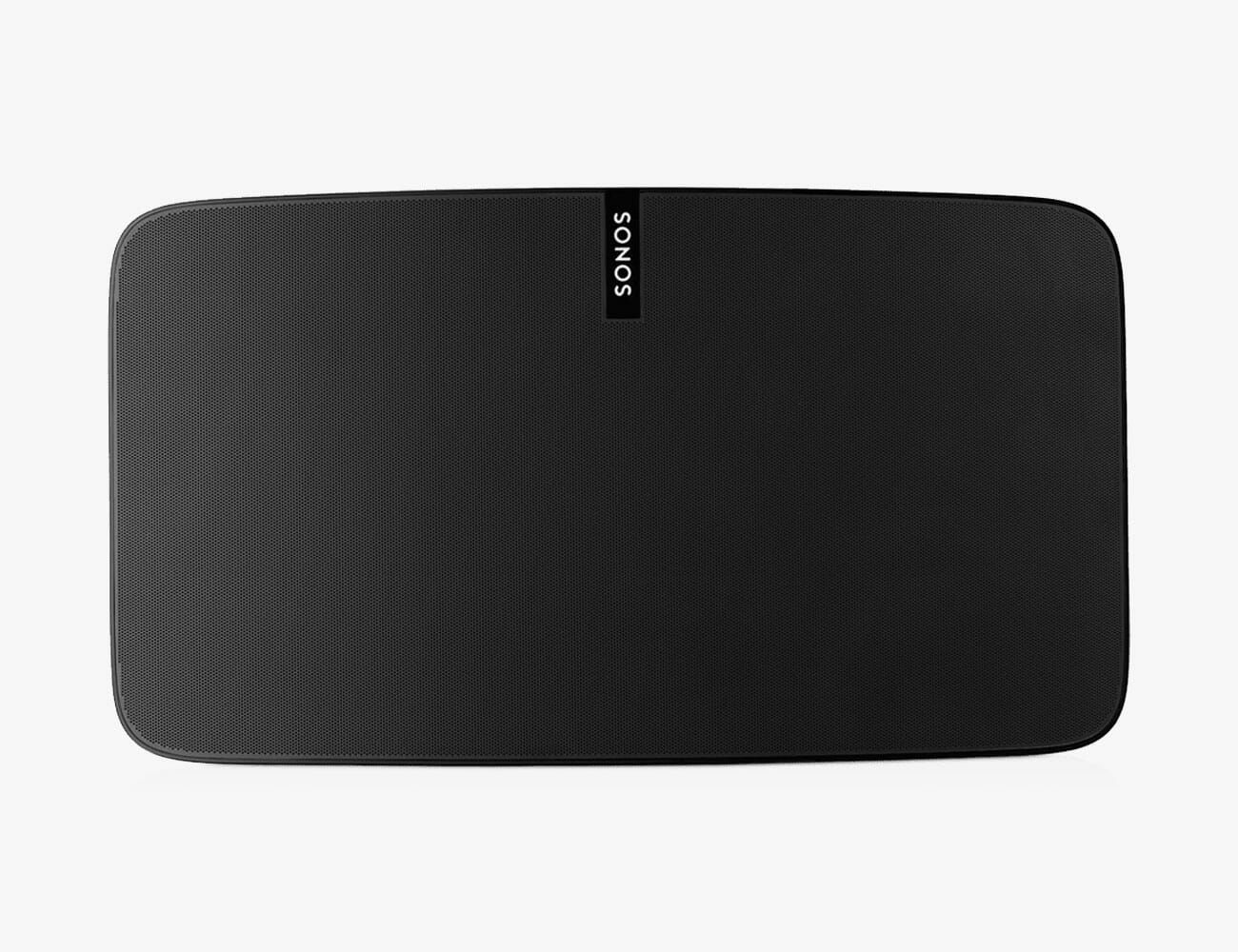 Amazon
AmazonSonos Play:5, Gen 2 (Discontinued)
Replaced by: Sonos Five
For years the Play:5 was Sonos’s biggest and best wireless speaker, but it was phased out in mid-2020 and replaced by the Five. (Sonos now only sells refurbished Play:5 models.) It is a significantly larger and much more high-fidelity speaker than the Play:1, with six drivers as opposed to the Play:1’s two drivers, each of which is individually amplified. The Play:5 works exactly the same as a Play:1 speaker — you can group it with other Sonos speakers or pair it with an Alexa device and control it with your voice — but it also has some key differences that make it more versatile. It can output both mono and stereo, for example. When the Play:5 is horizontal it will play stereo and when it’s vertical it will play mono; the Play:1 can only play stereo when paired with another Play:1 speaker. The Play:5 also supports audio line-in, which the Play:1 doesn’t, so it can hook up to a TV or a record player.
- Drivers: three mid-woofers, three tweeters
- Amplification: six Class-D digital amplifiers
- Connectivity: Wi-Fi, Ethernet, 3.5mm audio line-in, AirPlay 2
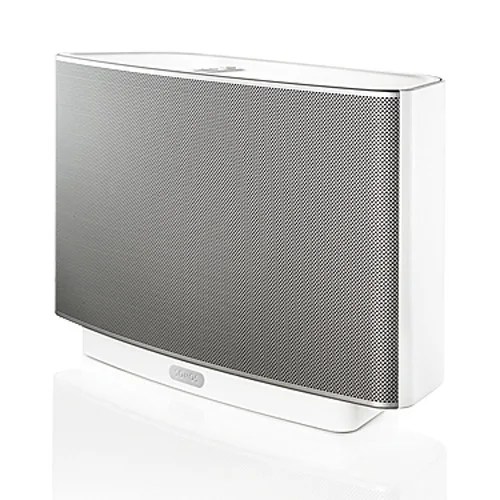 B&H Photo
B&H PhotoSonos Play:5, Gen 1 (Unsupported)
This product is unsupported by Sonos’ latest “S2” app. It still functions but in a limited capacity. Learn more here.
Replaced by: Sonos Five
The original version of the Sonos Play:5, originally called the ZonePlayer S5, was released in 2009. Reviewed well by critics in its heyday, the first generation Play:5 is well over the hill, and no longer supported by the most modern version of the Sonos app. It is mainly worth knowing about solely so that you do not confuse it with its newer, more modern varieties.
- Drivers: two mid-woofers, two tweeters
- Amplification: five Class-D digital amplifiers
- Connectivity: Wi-Fi, Ethernet, 3.5mm audio line-in
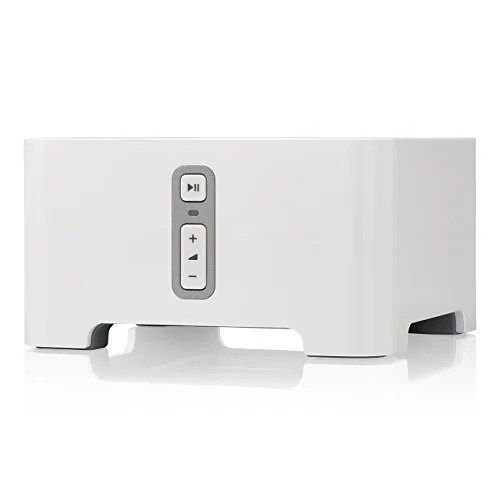 Amazon
AmazonSonos Connect (Unsupported)
This product is unsupported by Sonos’ latest “S2” app. It still functions but in a limited capacity. Learn more here.
Replaced by: Sonos Port
The Connect was Sono’s original amp that turns your receiver into a wireless one that you can stream music, too. The Connect has analog, optical and coaxial digital audio outputs. There’s no subwoofer output, however. In late 2019, Sonos introduced the Port, which is the next-gen model of the Connect.
- Amplification: None
- Connectivity: Wi-Fi, Ethernet, analog (RCA), digital (optical and coaxial)
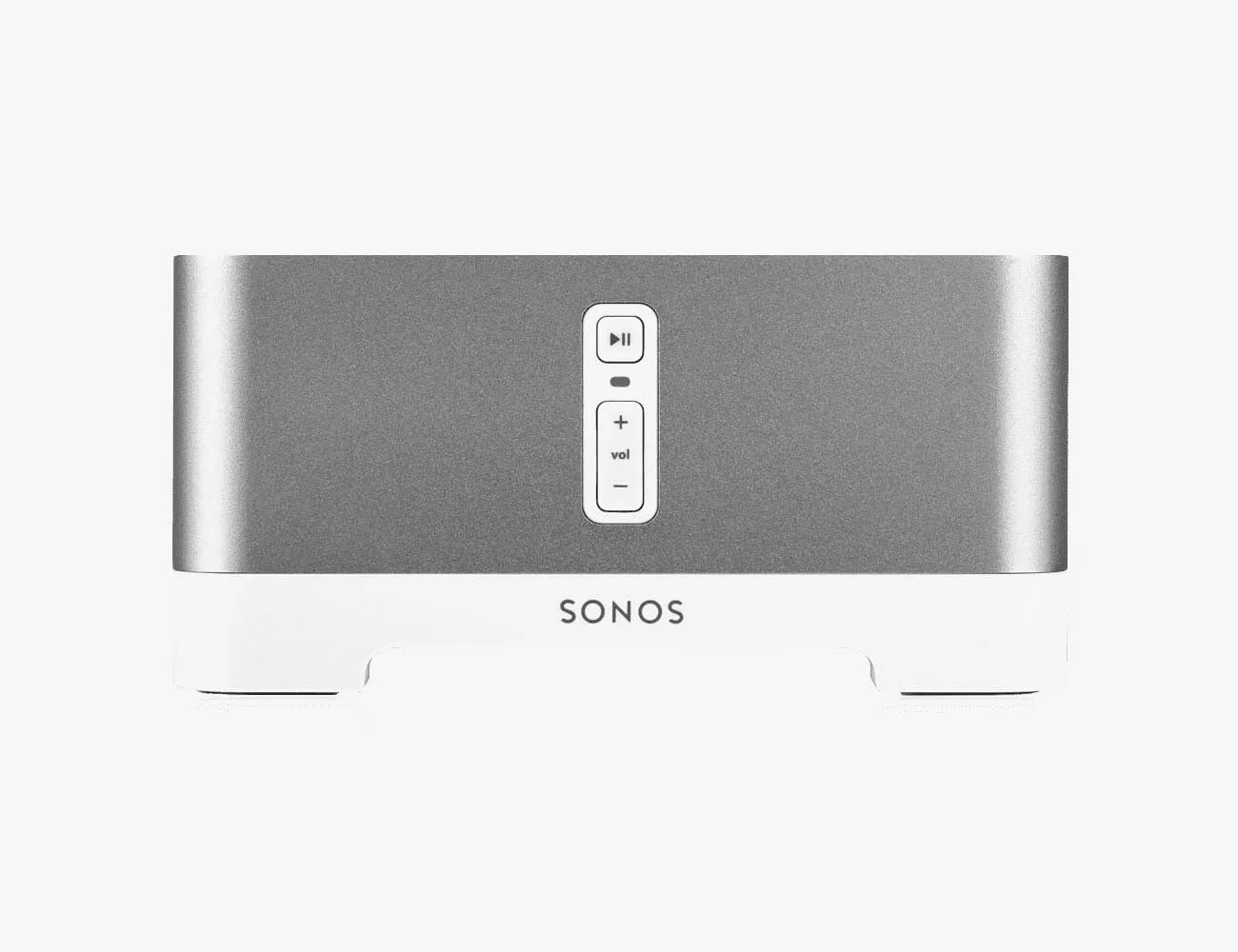 Sonos
SonosSonos Connect: Amp (Unsupported)
This product is unsupported by Sonos’ latest “S2” app. It still functions but in a limited capacity. Learn more here.
Replaced by: Sonos Amp
The Connect:Amp has its own built-in amplification and takes the place of that receiver and was designed to integrate passive bookshelf speakers into an existing Sonos system.
- Amplification: Class-D digital amplifier (55-watts per channel)
- Connectivity: Wi-Fi, ethernet, analog (RCA), digital (optical and coaxial), subwoofer

